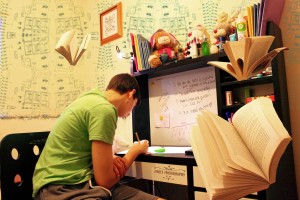Preparing for the Conference with Your Child’s Teacher
According to the National Education Association, “Research has proven that parental involvement is the most important factor in a student’s success in school.” There are likely many different contributing factors behind this statistic:
1) By sheer participation alone, involved parents demonstrate the importance of education when leading by example.
2) Parents who are involved in their child’s education act as an extra academic support system.
3) Involved parents set high, yet attainable expectations, which reinforce the idea that hard work and determination pay off.
4) Involved parents are likely communicative with the school and their child’s teachers, which ensures that what happens at school becomes a conversation at home, and vice versa.
That said, the parent-teacher conference may sometimes be viewed as a negative experience—one in which the child is presumably struggling academically or behaviorally. However, this is simply not the norm anymore. Gone are the days when a teacher’s email, phone call, or request for a meeting indicates a problem. Now, it is all about collaboration.
Read on for some tips to prepare for your conference with your child’s teacher.
Prepare student-centered questions in advance. This means that the focus of the meeting will stay on your child and his academic achievement. Ask about his tendency to participate, where he sits in the room, and his attentiveness. Ask if the teacher’s observations are similar from class to class, or if his behavior or focus fluctuates throughout the day. Inquire about certain grades that may have been lower than expected—teachers often file student work for moments precisely like this. Ask to see that work.
Feel free to take notes during the conference. These meetings are only as helpful as the information that you take away from them. Often times, because of the school day schedule, meetings are condensed into 30-40 minutes. With so much information being shared, it is important to jot down key points from the discussion so that nothing is forgotten.
Let your child know that you are meeting with his teachers that day. You do not want to surprise your child at school, leaving him wondering what caused you to show up randomly. You also do not want your child to worry that this meeting is to discuss his potential problems behind his back. Be open about the need for the conference and how it is beneficial to his academic performance.
Ask for suggestions about how to utilize time at home. Often times, the student at school differs greatly from the child you see at home. Ask teachers to elaborate on strategies that they have used with your child that seemed successful. Perhaps, routines that you are using at home are reinforcing conflicting messages.
Be sure to follow up the conference with any additional questions or concerns. Again, these meetings tend to proceed quickly. If you find yourself with further inquiries, make a note of reaching out for clarification. There is nothing worse than leaving the conference with less answers than before.
By preparing for your conference, you will likely find that you receive far more information and insights that you can use to support your child’s educational efforts and progress at home.












